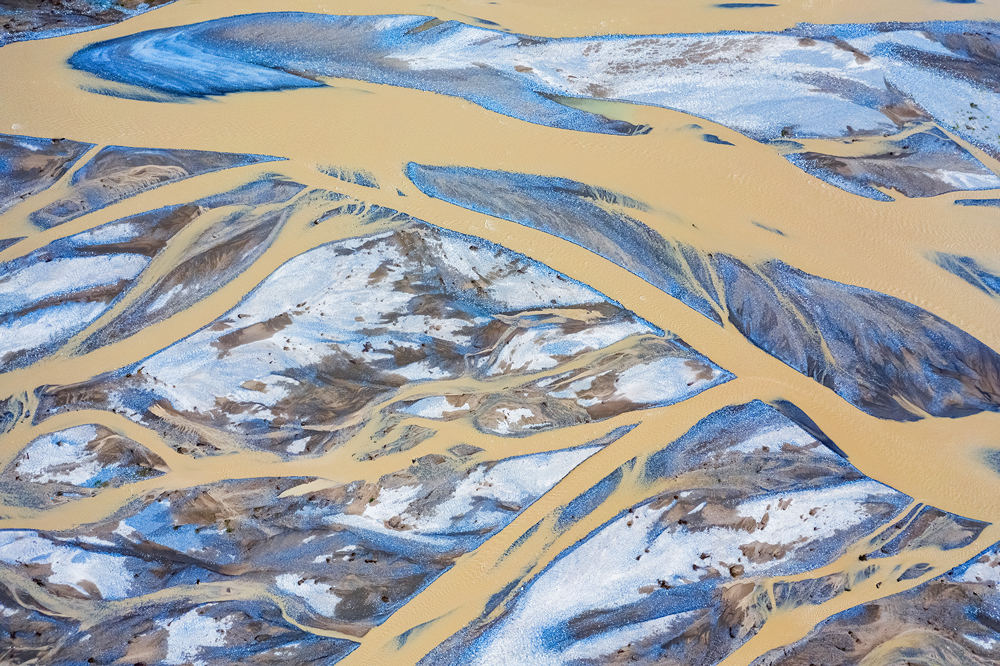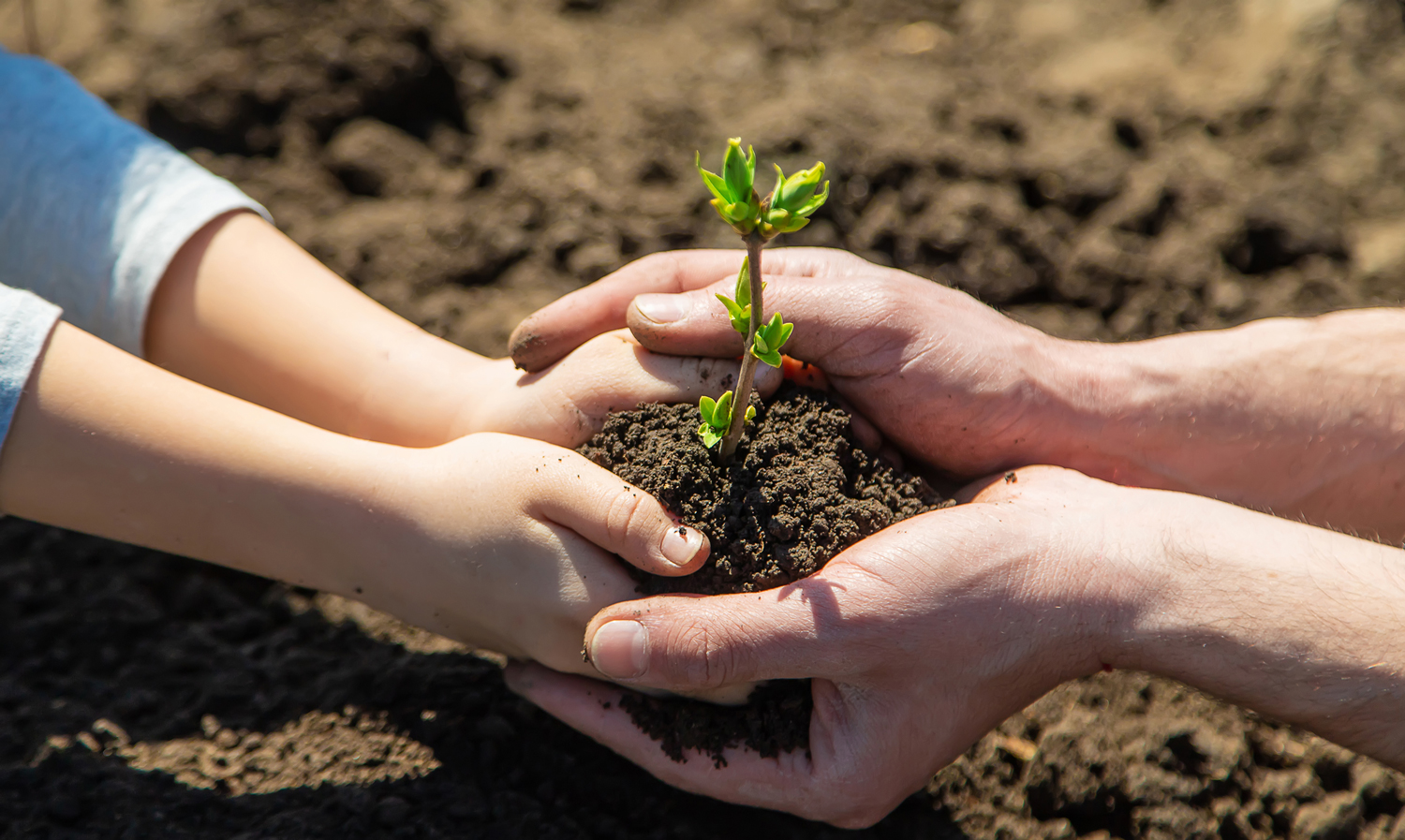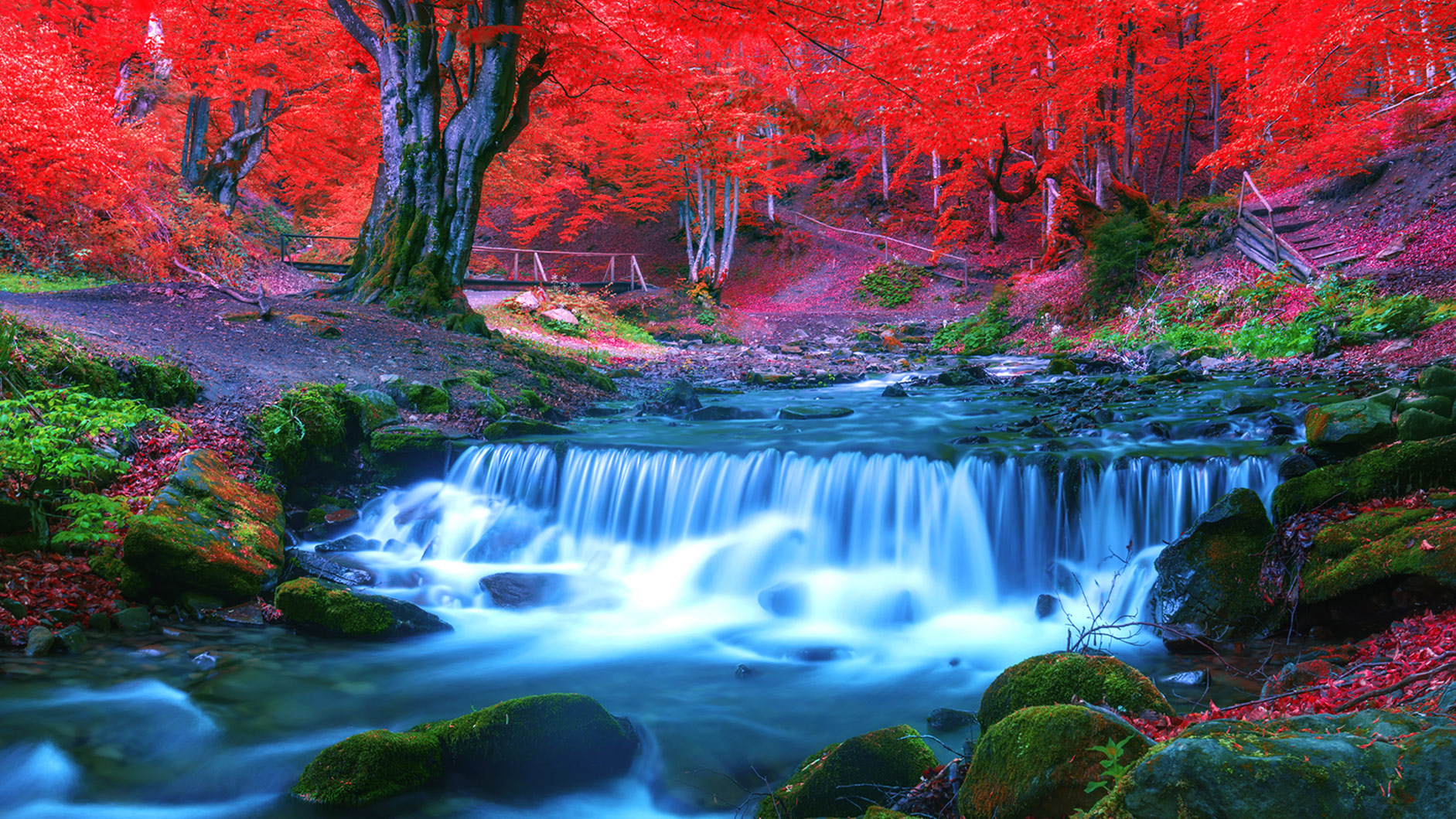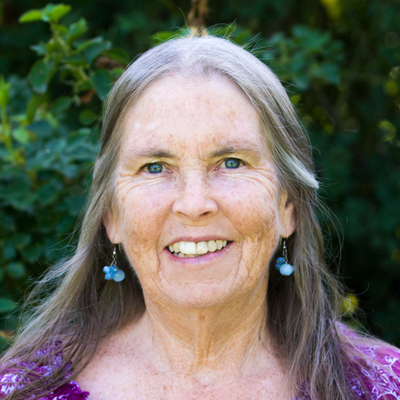Sweet, clean water is essential to life and happiness. It cycles in and around us in a fascinating variety of forms. Just add water to healthy soil and seed, and you have a nurturing environment of green, growing beauty and food. Remove water, and you remove all possibility of life of any kind.
The precious planet—that we travel through space upon—lives and breathes according to the flow of water above and below its surfaces
Delicate Balance
In the ten-year year period between 1980 and 1990, the Sahara Desert claimed an additional 130 kilometers of rock and sand along its southern reach. Analysis of rainfall data shows that the Sahara has increased by 10% since records began in 1920. Desertification is an increasingly widespread problem as climate change modifies weather patterns, leaving people to deal with hyper-arid conditions. The Sahara Desert is no exception, steadily growing across eleven countries and soon to cover more. This is just one small expansion in the titanic ebb and flow in which the entire region of North Africa metamorphoses between the driest, most inhospitable place imaginable and a vast grassland region supporting plants, animals, and people with its lakes and rivers. More recent signals show extensive regreening, due to increased rainfall of the Southern Sahara region, which is in turn increasing grazing areas and flourishing trees and shrubs in that region bordering the Southern Sahara. In the case of the Sahara, humans are not the only important factor in the changes that occur there. The Sahara has undergone extreme changes over large expanses of time as a result of slight climate alterations caused by subtle changes in the earth’s orbit around the sun, which were amplified by climatic feedback mechanisms, in this case triggering or canceling massive monsoon rains. The changes in the tilt of the earth occur gradually. However, the interplay of atmosphere, ocean, and landmass can react to these changes in abrupt and severe ways.
In our own part of the world, a delicate balance of natural cycles and technology are sustaining the flows of water through the Upper Santa Cruz River basin. Here, in the Northern part of the Mexican Highlands bioregion in Arizona, the Santa Cruz River—lifeline of the region—is renewed by treated effluent from Mexico, allowing sufficient recharge of aquifers in this minimally populated area. Since we are currently not pumping more water out of the ground than is being recharged every year by the rains and snows that grace this sector of the planet, we have a sustainable yield.
Water Protectors
When people realize the water source for their families and neighbors is being threatened, they do everything they can to protect it. In solidarity with the people of the Standing Rock reservation, the Indigenous people of North America have led the way in showing how powerful a unified movement to protect water can be.
In 2016, the Standing Rock tribe, along with the Yangton Sioux, the Oglala Sioux and the Cheyenne River Sioux tribes, started opposing the Dakota Access Pipeline (DAPL); which runs 1,170 miles from North Dakota to Illinois. The disputed section under Lake Oahe is 1.7 miles long. Lake Oahe is the Standing Rock tribe’s only source of fresh water. In April 2016, youth from Standing Rock and surrounding Native American communities organized a campaign to stop the pipeline, calling themselves "ReZpect Our Water". Inspired by the youth, several adults, including Joye Braun of the Indigenous Environmental Network and tribal historian LaDonna Brave Bull Allard, established Sacred Stone Camp as a center for direct action, demonstrating spiritual resistance to the pipeline in both a defense of Indigenous sovereignty and cultural preservation. The #NoDAPL hashtag began to trend on social media, and the camps at Standing Rock gradually grew to thousands of people.
In the words of camp participant Jeanne Dorado, principal of the Sacred Stone Community School, “When the Lakota people put out the call, over 400 tribes came and were represented in the camp at Standing Rock. The timing is wonderful because Native people all over the world are just done. We are sick and the planet is dying. Humanity is running out of natural resources. It is time to listen.”
As a result of the action to resist the pipeline, the Army Corps of Engineers was required to complete an environmental and safety review of the pipeline’s route underneath Lake Oahe to assess if it poses a threat to the Tribe. In August 2020, U.S. District Court Judge ruled that the pipeline be shut down while the Army Corps conducts an even more extensive review. Sadly, DAPL has been operating without a valid permit since March 2020, while the final decision against the operation of the pipeline is undergoing ongoing environmental review.
“We are gravely concerned about the continued operation of this pipeline, which poses an unacceptable risk to our sovereign nation,” said Mike Faith, chairman of the Standing Rock Sioux Tribe. “In a meeting with members of President Biden’s staff earlier this year, we were told that this new administration wanted to ‘get this right.’ Unfortunately, updates from the U.S. Army Corps of Engineers shows it has chosen to ignore our pleas and stick to the wrong path.”
Water Wars
 In many parts of the world, violence follows on the heels of water shortages, which result from both natural and human-made causes. For example, in the year 2000 in Hazarajat, Afghanistan, violent conflict broke out over water resources between villages as increasing drought severely depleted the water resources of the region. In that same year, Kyrgyzstan cut off water to Kazakhstan until coal was delivered while Uzbekistan cut off water to Kazakhstan for non-payment of debt.
In many parts of the world, violence follows on the heels of water shortages, which result from both natural and human-made causes. For example, in the year 2000 in Hazarajat, Afghanistan, violent conflict broke out over water resources between villages as increasing drought severely depleted the water resources of the region. In that same year, Kyrgyzstan cut off water to Kazakhstan until coal was delivered while Uzbekistan cut off water to Kazakhstan for non-payment of debt.
Almost half, 47%, of the world’s land mass is drained by river basins that run through more than one country. Aquifers also cross political boundaries in many parts of the world. Potentially, each of these flash points could produce a water war. For example, if countries upstream try to take water that countries downstream believe belong to them or if neighbors pump so much groundwater that the levels decrease around the region, bitter conflict can (and does) happen. The practice of stealing resources from weaker countries is just as motivated these days by the desire for water as it has traditionally been for fertile land and plentiful ore—and more recently vast reserves of oil.
Water wars have also erupted over the quality of water that one country is delivering to another. More than half the world’s rivers are now so polluted that they pose serious health risks. Water underground is also being polluted, especially in the U.S. where chemical pesticides and fertilizers are migrating from the surface down into the groundwater.
In 1935, Arizona Governor Benjamin Moeur, a politician with a flair for the dramatic, dispatched his National Guard troops to the Colorado River to stop California from building the Parker Dam and “stealing” Arizona’s water. A hundred guardsmen with machine guns showed up at the dam site, and bewildered construction workers climbed down off their bulldozers and laid down their shovels. Later, the U.S. Supreme Court said that California was illegally exporting water without Arizona’s permission. But then, Congress passed a law overturning the court decision and allowing California to go on “stealing”.
Throughout the 1950s and 1960s and beyond, disputes between states continue in the courts, especially in the American West. To view a long list of documented water wars all around the world, beginning in Ancient Sumeria in 3000 BC and increasing in numbers of violent disputes worldwide to the present day, check out www.worldwater.org/conflict.html. There are some observers who believe that there will be water wars in the future far more serious than Governor Moeur’s political stunt or the worldwide skirmishes of the mid-twentieth century. Others say water is so important (particularly for growing food) that disputes will have to be resolved through negotiation before people start shooting. No one knows if or when the next water war will come, but we can be sure that it will be fought over either the quantity or the quality of water.
The term “water war” was devised by environmentalists for a type of conflict (most probably a form of guerrilla warfare) due to an acute shortage of water for drinking and irrigation. About 40% of the world’s populations are already affected to some degree, but population growth, climate change, and rises in living standards will worsen the situation. The UN Environmental Agency warns that almost 3 billion people will be severely short of water within 50 years. Possible flash points have been predicted in the Middle East, parts of Africa, and in many of the world’s major river basins, including the Danube. The term has been used for some years to describe disputes in the Southern and Southwestern United States over rights to water extraction from rivers and aquifers.
“When the well’s run dry, we know the worth of water,” observed Benjamin Franklin in 1774. But he was wrong. In the United States, we utterly fail to appreciate the value of water, even as we are running out. We Americans are spoiled. When we turn on the tap, out comes a limitless quantity of high-quality water for less money than we pay for our cell phone service or cable television. Ignorance is bliss when it comes to water. In almost every state in the country, a land-owner can still drill a domestic well anywhere, anytime—no questions asked. Many states do not even require permits for commercial wells unless the pumping will exceed 100,000 gallons a day (that is 36 million gallons annually).
Water lubricates the American economy just as oil does. It is intimately linked to energy because it takes water to make energy, and it takes energy to divert, pump, move, and cleanse water. Water plays a critical role in virtually every segment of the economy, from heavy industry to food production, from making semi-conductors to providing Internet service. A prosperous future depends on a secure and reliable water supply. And we do not have it. To be sure, water still flows from taps, but we are draining our reserves like gamblers at the craps table.
From Gambling on the Future to Creating a Sustainable Future
Until we become one planetary family, we have little hope of becoming the progressive and cooperative global society that is required to reverse the current trend of converging crisis in every area of environment and culture on the planet. We all need to BE AWARE of the desperate fix that short-sighted greed has created and work together for the common good of all. Hopefully we will all start recognizing the need for supporting leaders of true integrity, vision, and Godly power.
Unstable and threatened water ecosystems are just one of the signs (outlined in many prophesies) to signal the end of one world and the harbingers of a new world coming. The good news is that people everywhere are seeking solutions to water problems. Becoming responsible stewards of our local watersheds is a good place to start. Bioregional watershed groups are forming all over the world, encouraging their local individuals and organizations to find ways to live within the natural confines of their specific bioregions. Many of these grassroots groups are part of a global movement called the WaterKeeper Alliance, which has over one million volunteers and supporters from over forty-five countries.
In the region of the Santa Cruz River (in Sonora, Mexico and southern Arizona), Nancy Freeman of the Groundwater Awareness League suggests the following ideas for “keeping water in the desert”:
- A national law that forces the states to connect surface and groundwater management, so that groundwater pumpers cannot rob riparian habitat, rivers, streams, creeks, and springs of their water.
- Federal law to protect water levels in National Forests and Parks to maintain surface water and stream flow levels for habitat and forage for animals, birds, fish, critters, and creepy crawlers.
- Identify specific riparian areas, rivers, creeks, and springs and limit pumping adjacent to them to prevent draining of these areas that are essential to the well-being of humans and nature.
- Create a culture where water management is mandated and required for environmental sustainability.
- Sane, scientific regulation of wastewater.
 There is a beautiful allegorical tale, called “The Man Who Planted Trees” by French author Jean Giono, which captures the devastation and regeneration of a region that loses all its trees and water and is replanted by a man named Elzéard Bouffier. In this tale, a young man goes hiking into a desolate area of the French Alps in 1910, where all the trees have been cut down to feed the charcoal industry. Once the trees are gone the ground water is no longer drawn up through their roots and the water retreats deeper into the earth until there is no longer any surface water glistening anywhere for miles around. The young man finds a ruined village with a dry fountain and no signs of life. As he is hiking, he himself runs out of water and is rescued by the shepherd Bouffier, who it turns out has been single handedly planting trees in the region for years. Years later, the young man returns to the area and finds Bouffier has transformed the entire region into forests of young saplings, and has become a beekeeper (rather than a shepherd) because he worried about the sheep affecting his young trees.
There is a beautiful allegorical tale, called “The Man Who Planted Trees” by French author Jean Giono, which captures the devastation and regeneration of a region that loses all its trees and water and is replanted by a man named Elzéard Bouffier. In this tale, a young man goes hiking into a desolate area of the French Alps in 1910, where all the trees have been cut down to feed the charcoal industry. Once the trees are gone the ground water is no longer drawn up through their roots and the water retreats deeper into the earth until there is no longer any surface water glistening anywhere for miles around. The young man finds a ruined village with a dry fountain and no signs of life. As he is hiking, he himself runs out of water and is rescued by the shepherd Bouffier, who it turns out has been single handedly planting trees in the region for years. Years later, the young man returns to the area and finds Bouffier has transformed the entire region into forests of young saplings, and has become a beekeeper (rather than a shepherd) because he worried about the sheep affecting his young trees.
For over four decades, Bouffier continues to plant the trees, and the valley is turned into a kind of Garden of Eden with a vibrant ecosystem that is now supporting over 10,000 people. The story has a happy ending with local authorities creating a Park to protect the new forest and ecosystem. Another title of this tale is “The Man Who Planted Hope and Reaped Happiness.”
For many years people wondered if Giono’s story was a true one. However, Giono eventually explained that Elzéard Bouffier is a fictional person and that the goal of the story was to make trees likeable, or more specifically, to make planting trees likeable. The book was translated into a multitude of languages and distributed freely. It has been a tribute and a catalyst for the following real-life counterparts.
- Abdul Karim in India created a forest out of “nothing” over a period of 19 years, using the same method as Bouffier.
- An organization called Trees for the Future has assisted more than 170,000 families in 6,800 villages of Asia, Africa, and the Americas to plant over 35 million trees.
- Wangari Maathai, 2004 Nobel Peace Prize recipient, founded the Green Belt Movement, which planted over 30 million trees to restore the Kenyan environment.
- Of course there is always the legendary early 19thcentury American tree planter Johnny Appleseed.
- Another tireless promoter of tree-planting is Marthinus Daneel, working with churches to plant millions of trees in Zimbabwe.
- Also inspired by the story was Bhausaheb Thorat, a farm leader and legislator in the Indian National Congress, who launched a campaign in 2006 to turn a drought-stricken region into a lush forest by planting 45 million seeds and saplings annually in villages 200 km from Mumbai.
We all choose every day to direct the energy that God freely bestows upon us towards building a future of trees and flowing water and healthy children or perpetuating the fallen system that increasingly destroys the natural cycles of the earth. Restoration begins with a kind thought and a Godly deed for one’s neighbor. Let us do all within our power to make sure the following story from the Chiricahua Indians never comes true.
The End of the World
When the end of the Earth is coming
All the water will begin to dry up.
For a long time there will be no rain.
There will be only 3 springs left.
At those 3 springs the water will be dammed up,
And all the people will come there and start fighting over the water.
In this way, most of the people will kill each other off.
When the new world comes after that
the whites will be Indians.


